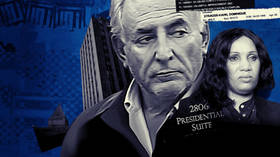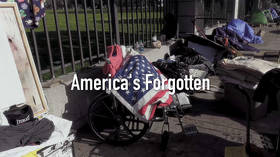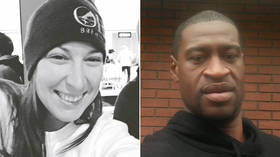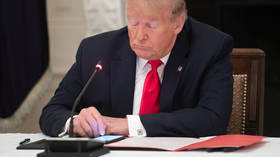Netflix’s new crack cocaine documentary is addicted to pushing a racist agenda & ignores CIA’s role in US’ 80s drugs crisis
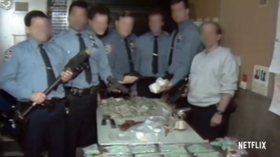
A new documentary, Crack: Cocaine, Corruption & Conspiracy, reflects how drugs took a grip of America 40 years ago. But it lacks insight and profundity because it studiously avoids the hard questions in favor of easy answers.
Crack: Cocaine, Corruption & Conspiracy, directed by Stanley Nelson, recounts the rise of crack cocaine in the 1980s and the US’ calamitous War on Drugs unleashed in response to it.
Cocaine, corruption and conspiracy are three things I can’t get enough of, so when this documentary was released on Netflix on January 11, I dove right in. The movie certainly lives up to its name, as it does chronicle cocaine and corruption, but when it tries to tackle conspiracy, it stumbles noticeably.
The film opens strongly with a chapter titled Greed is Good, which highlights the ties between the muscular American capitalism of the Reagan revolution of the 1980s and the explosion of the drug trade in the country’s inner cities.
The drug dealer as a black-market, underclass extension of the archetypal American entrepreneur is a compelling idea, but unfortunately, the film quickly eschews such high-minded observations and devolves into purely race-based analysis.
The film’s thesis is that crack, the media and political response to it, and the War on Drugs, were a function of racism.
The documentary repeatedly makes this assertion and assumes it to be true, but unfortunately never actually proves it. In fact, the movie is often at cross-purposes with itself over its race-based contention.
For instance, the film claims that, due to racism, law enforcement originally didn’t police black neighborhoods and therefore let drugs flourish. When black communities demanded aggressive police action to combat crack and officials responded with increased policing of black neighborhoods, that’s deemed racism, too.
The documentary is chock-full of this sort of circular logic, confirmation bias and shirking of responsibility.
Another argument is that the government’s amenable response to the opioid crisis, which affects more white people, as opposed to its draconian response to the crack epidemic, which affected poor black neighborhoods, is proof of racism.
This ignores a fact that the film details extensively: that the crack epidemic was accompanied by massive gun violence, something that hasn’t occurred with heroin.
Drug gangs selling crack engaged in gun battles over territory, which resulted in many deaths, but it wasn’t just drug users and dealers that were dying, it was civilians caught in the crossfire too. This led to much public outcry and to government officials resolving to stop the bloodshed.
As Sam Quinones reports in his 2015 book Dreamland, Mexican heroin dealers in the US use a very different approach than violent crack dealers. To avoid police attention, these dealers don’t carry guns or use violence, and target smaller cities with a customer-friendly approach that includes phone orders and direct delivery. In essence, these dealers have become like the Big Pharma companies that pushed the scourge of opioids onto the American public with the blessing of the government and medical establishment in the first place.
The documentary ignores these facts in favor of reducing everything to simple racism.
As for the “conspiracy” in the film’s title, the movie raises –but then refuses to answer– whether the CIA had smuggled cocaine into the US from Central America (thus creating the crack epidemic) during the Iran-Contra affair.
This “conspiracy” is referenced numerous times but, while never refuted, it’s also never endorsed. The furthest the film goes is to say that it’s understandable that black people believe in this conspiracy since they’ve been so victimized by the government and the war on drugs.
There is compelling evidence that the CIA did smuggle cocaine into the country and was responsible for the explosion of crack and guns in inner city neighborhoods.
Gary Webb famously wrote about this in 1996 for The Mercury News and in his 1998 book, Dark Alliance. In response, the mainstream media quickly jumped to the defense of the CIA and pilloried Webb, essentially ending his career. Webb ended up ‘committing suicide’ in 2004 by shooting himself twice in the head.
An Inspector-General’s report later verified much of what Webb claimed, according to journalist and Webb biographer Nick Schou, who wrote, “The CIA conducted an internal investigation that acknowledged in March 1998 that the agency had covered up Contra drug trafficking for more than a decade.”
The CIA is ruthless and amoral, so its use of the drug trade as a social destabilizer and off-the-books income source shouldn’t be shocking.
Alexander Cockburn details the intelligence community’s history of illegal drug operations in his 2014 book Whiteout: The CIA, Drugs and the Press. According to Cockburn, the CIA was testing LSD on unsuspecting civilians in San Francisco and smuggling heroin from Vietnam in the 1960s, running cocaine and guns from Central and South America in the 1980s, and restarted the opium trade in Afghanistan after the US invasion in 2001.
The documentary dutifully ignores Webb and Cockburn’s conspiratorial context, and its cowardly agnostic approach makes the film seem like controlled opposition, as it simply recycles establishment-sanctioned talking points around the war on drugs and uses racism as a shield to avoid bigger questions. In other words, the movie is just another opiate for the myopic mainstream masses.
Racism and a CIA conspiracy can both be, and probably are, major contributors to the moral atrocity and social calamity that is the War on Drugs, but shouting one and tap-dancing around the other turn Crack into just another documentary that would sooner tell people what they want to hear, rather than tell them the whole uncomfortable truth.
Think your friends would be interested? Share this story!
The statements, views and opinions expressed in this column are solely those of the author and do not necessarily represent those of RT.

